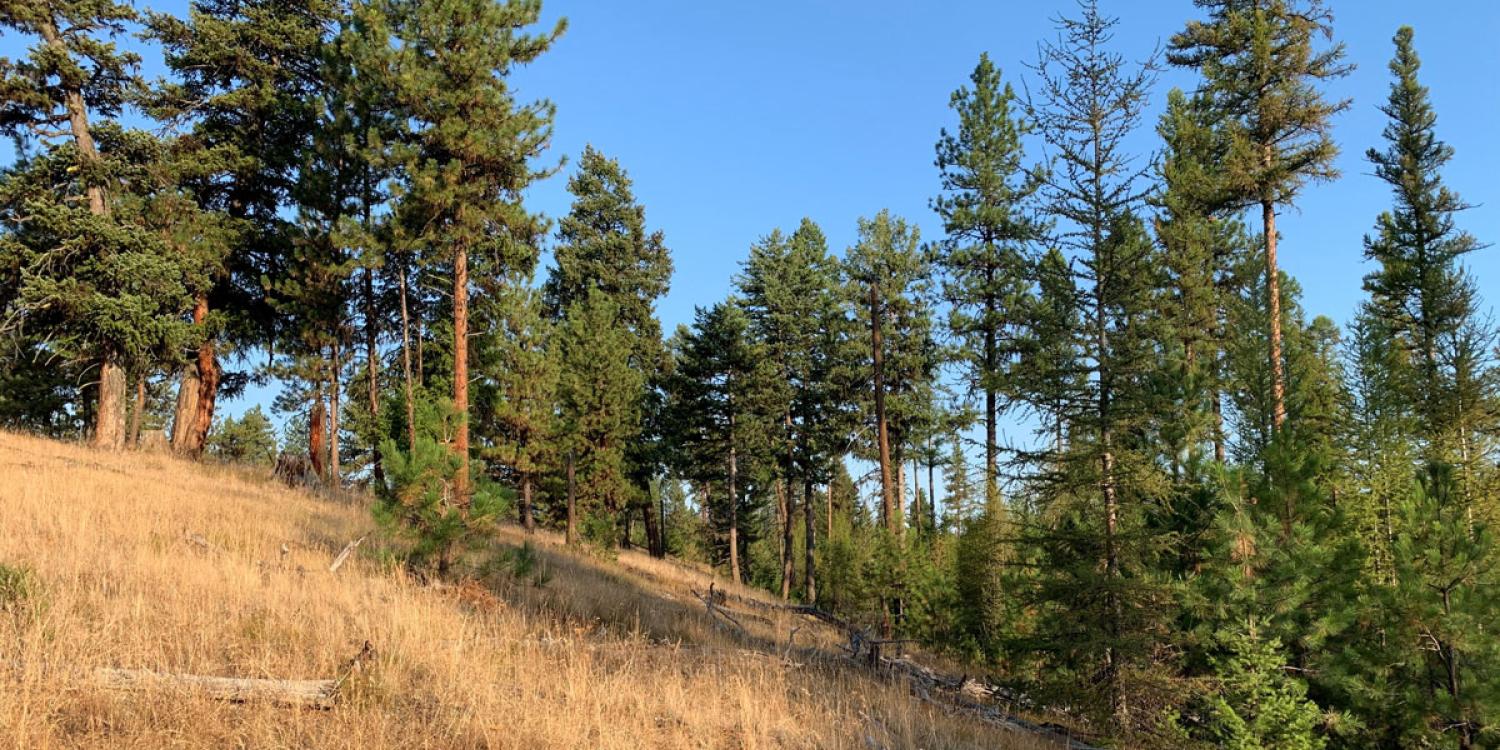
Eastern Oregon landowners have a wide range of needs that make managing the region’s diverse forests challenging. Getting individualized information on topics such as timber production, grazing, wildlife habitat, forest health improvement and wildfire risk reduction, is complicated by the region’s challenging winter weather, the high number of absentee landowners and the vast area – 66,000 square miles.
In response, Oregon State University Forestry and Natural Resources (FNR) Extension Fire Program faculty members banded together to create a webinar series exploring the roadblocks landowners face when managing varied forest types in eastern Oregon. The series of 13 classes – held from January to April 2021 – was structured so anyone could attend and the team developed a website as a repository for the recordings.
The FNR team, including both forestry and fire experts, ensured the information was concise, compelling and interactive. They focused on practical applications appropriate to landowners’ forest types like ponderosa pine, mixed conifers, lodgepole pine, hardwoods, riparian areas, juniper encroachment and other specific objectives. The team developed a website as a repository for the recordings so anyone can watch them at any time.
John Punches, Extension forester and associate professor in the College of Forestry, and the other experts spread the news about the webinars and promoted it through mail, social media and email. In addition, the Oregon Department of Forestry elevated the outreach through its landowner connections, and the regional, nonprofit Wallowa Resources used American Forest Foundation funds for direct mailing. The series was featured on the Know Your Forest website and was incorporated into OSU Extension’s Tree School Online outreach.
The live webinars had 1,127 views and the recordings were viewed 327 times by the end of 2021. In 2022, a series of seven webinars were presented in March and April, with participation ranging from 44 to 92. Most topics drew more than 60. Additionally, the recordings had been viewed 145 times as of late December.
A survey conducted in December showed that 24% of responding participants were absentee landowners while 27% lived on the forestland they owned or managed. Levels of forest management experience varied from zero to forestry professionals, with 10% of survey respondents indicating they were professional foresters. While 61% of respondents owned forestland in eastern Oregon, respondents included participants from western Oregon and several other states. The largest group of respondents (34%) indicated they owned forestland and did some management.
Respondents indicated that they were inspired by the webinar series to:
- Seek professional assistance (15%)
- Seek financial assistance (8%)
- Conducted range or forest fuels reduction (12%)
- Enhanced wildlife habitat (7%),
- Improved their home (11%) or landscape (12%) fire resistance.
- Coordinated with neighbors to collectively reduce fire risk (5%).
These results indicate that the webinars helped the region's landowners apply best management practices and reduce fire risk, and that we reached a significant number of absentee landowners.